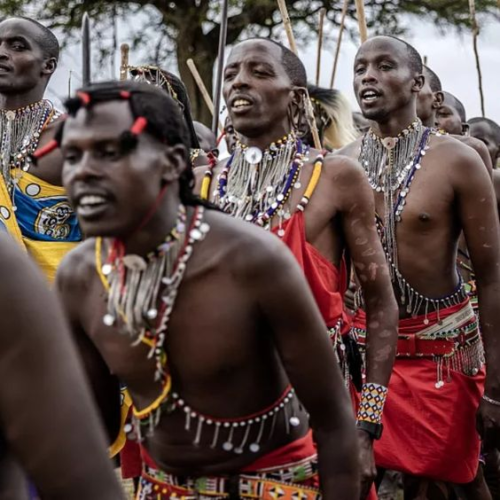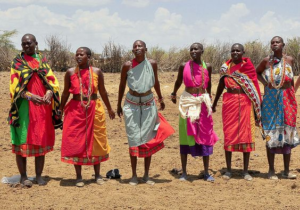The Maasai are global ambassadors of Kenya. They are known for their iconic dances and well-done crafts, which are available in local and international markets. You’ll find Maasai bracelets and people donning the Maasai shuka in Kenya. But there is something behind the scenes., and we’ll share it in a little while.
The Maasai warriors in Kenya are at a crossroads in the quest to maintain their heritage as they face opportunities and challenges. Some modern issues the warriors face today include environmental shifts, economic pressure, and globalization, greatly influencing their way of life. The good news is that they are trying to overcome some of these challenges and are taking some actionable steps.
So, this article will highlight some of the common challenges the Maasai face and how they tackle them. Stick around.
1. Climate Change
There have been unpredictable weather patterns in pastoral regions. It’s a big problem for the community because climate change leads to extreme weather patterns. Such weather causes draught, thus impacting the pastoral lifestyle. Draught causes dwindling grazing lands and water scarcity, hence affecting the Maasai economy and their culture.
Regions like Narok and Kajiado are examples of how changing climate patterns have affected livestock. Furthermore, their population significantly reduces every time drought strikes, leading to food and income insecurity.

Fortunately, some maasai are adopting sustainable practices such as rotational grazing and working with NGOs to make water conservation projects successful. Some initiatives require resources and education, which makes them slow to succeed.
2. Cultural Preservation Amidst Globalisation
Tourism and the internet have had a significant impact on Maasai culture. Exposure to the Western way of life has caused dilution and misrepresentation of the Maasai tradition.

For instance, tourists often expect warriors to wear traditional attire every time. Doing this always pressures the Maasai people to perform instead of upholding their identity by living authentically. Fortunately, some Maasai leaders are advocating for authentic cultural exchange in tourism. They also enlighten visitors on the need for respectful engagement.
3. Land Disputes
Land Disputes keep intensifying as private and government developers continue to acquire Maasai land. For example, the Maasai have run out of land to graze their animals, and that is how most land disputes erupt.
Financial struggles have also made some Maasai sell their ancestral land. Some use the money to educate their children, while others use it to sustain themselves.
Areas such as Laikipia are prone to land disputes. Mostly, the Maasai have clashed with ranch owners, escalating to legal disputes and sometimes conflicts.
The good news? Some communities are now working to acquire legal titles for communal lands. However, obtaining these rights requires legal assistance and resources.
4. Balancing Tradition and Modern Education
Education is a proven way of opening doors to various opportunities. However, in a community such as Maasai, where youth attend schools away from their families, education has been a downside. The Maasai have had to strike a balance between traditional and modern education.

Younger generations now attend schools more than conventional warrior training. The downside? Cultural knowledge loss. To address these issues the warriors are now establishing education programs that combine formal education with cultural teachings.
5. Health Challenges and Limited Access
Maasai people prefer living in remote areas. As such, they lack access to healthcare facilities. They then face issues such as malnutrition, maternal health complications, and risk of acquiring diseases.
Example: During droughts, cases of malnutrition are always on the rise as food and water sources go dry. This, as a result, affects children and the elderly the most.
Some initiatives to help improve the situation include health NGOs starting Mobile clinics and collaborations with Maasai healers. However, these initiatives fail because the lack of consistent funding remains a bigger issue.
6. Shifting Roles for Women in Warrior Culture

Maasai women welcoming visitors
Maasai women now seek an active voice in the community and they’re comfortable participating in major activities. Initially, the Maasai women played supportive roles only. They now join leadership positions and advocate for issues like healthcare, education, and financial support. These were roles that were once warrior-focused. This initiative enabled women to engage in cultural leadership, which has then refined warrior roles.
Maasai Tribe Warriors Becoming Stronger and Better
Maasai tribe warriors in 2024 undergo a challenging period where they must balance upholding their cultural heritage and adopting a new world full of demands. Some challenges, such as climate change, globalisation, and education, require resilience, adaptability, and commitment to identity. As the world keeps evolving, the warriors not only uphold their proud traditions, they also define what it means to be a warrior in Kenya today.
FAQs
- Are Maasai warriors strong?
Yes. They are known for their endurance, physical strength, and deep knowledge of survival and protection.
- How is Maasai life-changing in modern times?
Modern education, urbanization, and exposure to new cultures are redefining the Maasai lifestyle. That has made them adapt as they try to maintain cultural values.
- What are the problems faced by the Maasai people?
The Maasai face land disputes, climate change, and economic pressures. Such problems keep threatening their usual way of life.
